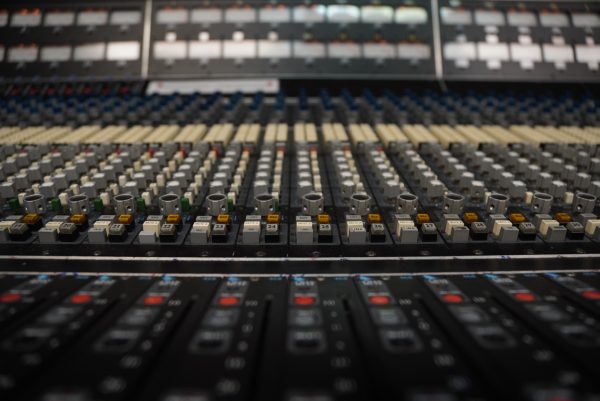Updated technology reigns supreme as buildings go green
September 6, 2009
In an effort to modernize Columbia and improve sustainability, electrical, heating and ventilation systems were updated over the summer. In addition, various construction projects were completed to improve the safety of individuals at Columbia.
However, due to budget cuts, certain building projects were put on hold as the college worked on renovating old systems and updating classrooms and labs with new equipment.
One such project accomplished during the summer involved the science lab, located in the Wabash Campus Building, 623 S. Wabash Ave. John Kavouris, associate vice president of the Office of Facilities and Operations, met with faculty in the Science and Mathematics Department and was told that the lab was outdated. During renovation, one of the labs and the prep areas were completely gutted and new science equipment was brought in, which allows faculty to teach science in a modern environment with up-to-date equipment.
“The science lab is the biggest thing that students will notice this year,” Kavouris said. “Before we renovated it, [faculty] had described it as a lab that would have fit into a high school situation in the ’70s or ’80s.”
The third floor of the Wabash Campus Building was updated with new carpet, and offices were reconfigured due to the new presence of Career Initiatives. This renovation will bring the Office of Student Employment and the Portfolio Center together in one office.
Classrooms were repainted and updated with new carpets in the Wabash Campus Building, as well as the Music Center, 1014 S. Michigan Ave., and the 1104 Center, 1104 S. Wabash Ave.
During past summers, there were no floor renovations on campus because of budget restrictions at the college, Kavouris said. During the past fiscal year, Columbia was forced to cut the capital budget given to the Office of Facilities and Operations in half, allotting the department only $6 million to use for renovations and upgrades.
“This is a lean year because of budget constraints,” Kavouris said. “Last year, we [had to] cut our capital budget roughly in half.”
One of the most costly projects, slated to be completed at the end of 2009, is replacing the century-old boiler and the electrical systems in the Alexandroff Campus Center, 600 S. Michigan Ave. The project will allow the building to be more environmentally sustainable and have a more energy-efficient electrical and heating system, substantially increasing the amount of power that can be used in the Alexandroff Campus Center.
“We have to do renovations and repairs to [Columbia’s] older buildings in order to bring them up to building code,” Kavouris said. “The boilers in the [Alexandroff Campus Center] were the original boilers built with the building a hundred years ago.”
Another change in the Alexandroff Campus Building was moving the Underground Cafe entrance inside the building, which allows the building’s security guards to monitor the cafe more closely.
In terms of the college’s safety and security, more than 65 percent of Columbia’s buildings have been equipped with sprinklers.
Alicia Berg, vice president of Campus Environment, said the college is determined to install many of Columbia’s sprinklers by the end of the fiscal year in September 2010, contingent upon scheduling and budget concerns.
“It [will] enhance the safety and security of the campus,” Berg said. “There’s also a city ordinance that requires all high-rise buildings to [have] sprinklers.”
In addition to ramping up security and modernizing the college, many of Columbia’s buildings are expanding their sustainable efforts by installing automated heating and ventilation systems, said Joseph Leamanczyk, project manager for Campus Environment.
“When people are gone, [the systems] automatically ramp down,” Leamanczyk said. “So [the system] is not running when nobody is here. Light switches [have] occupancy sensors, so this means the lights go off after 15 minutes of no activity, so that saves a lot of energy.”
A major building project currently in the midst of construction at the college is the Media Production Center, which is scheduled to open by spring 2010, Kavouris said. During the summer, construction was done on the structure and the roof was installed. In addition, major electrical and mechanical equipment was installed, as well as the heating and cooling systems.
“We’re starting to work on the interior of the building now,” Kavouris said. “The building is on budget and scheduled to open in the spring.”
Though budget constraints will affect future construction projects, Kavouris said the school will continue making repairs to outdated classrooms and equipment, which will ultimately prepare Columbia for a cost-effective and sustainable future.







